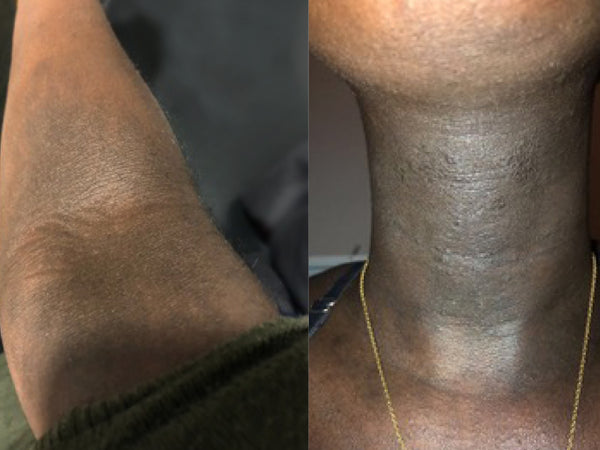Post-Inflammatory hyperpigmentation is one of the most common skin issues, yet it’s also one of the least talked about. We take a look at what causes PIH.
Post-Inflammatory hyperpigmentation, (also known as PIH) is the cause of a lot of distress and confusion across the world; while PIH isn’t itself dangerous or painful, the discolouration it causes can, at best, knock sufferers’ self-confidence, and at worse be responsible for a great deal of suffering, especially if the discolouration is very visible.
Millions of pounds are spent on (often quite dangerous) skin-lightening products across the world, as people try to get rid of hyper-pigmented marks, scars and blemishes on their skin.
But why does PIH happen in the first place?
The clue is in the name: PIH is a discolouration (pigmentation) of the skin that happens after some kind of inflammatory damage has occurred. Trauma to the skin causes inflammation, which in turn triggers pigmentation cells (melanocytes) to produce more pigment; if the damage is severe enough, those pigment particles can end up lodged in the dermis, the deepest layer of skin. That means they’re very hard to shift, because the dermis which doesn’t renew itself in the same way as the ever-regenerating top layer (epidermis) does.
When pigment is trapped deep down in the dermis, it takes longer for it to disperse and for marks or discolouration to fade away. What remains are areas of flat, darker or differently coloured skin in the places where the inflammation has happened.
What can cause this kind of damage to the skin?
- Acne, especially spots that have been picked at
- Eczema & other inflammatory skin conditions (especially where the skin has been scratched.)
- Injuries, such as cuts, grazes, or scabs that have come away before healing
- Surgical scars
- Cosmetic procedures (microdermabrasion, peels, lasers)
- Infections
- Allergic reactions
- Burns
- Reactions to medication

If you’ve noticed darker areas on your skin, which are flat rather than raised, and appear where you’ve had acne, eczema or an injury of some sort, it might be post-inflammatory hyperpigmentation.
Who is most likely to be affected by PIH?
People of colour are more likely to suffer from, and have more severe occurrences of, PIH than pale skinned people. In fact, PIH is one of the most common reasons for people of colour to consult a dermatologist. Unfortunately, representations of PIH on skin of colour are not as standard as they should be, and the seriousness of its effect on sufferers’ mental health is largely underplayed. (See Alaa Hassan’s article for Balmonds, Post-Inflammatory Hyperpigmentation: My Flaky Relationship With My Skin Disorder.)
People suffering from lupus and lichenoid dermatitis can also be seriously affected by PIH, as the deepest layers of their skin are already disrupted.
See How To Get Rid Of Post-Inflammatory Hyperpigmentation for further information about looking after skin affected by PIH.
Recommended products:
Skin Salvation balm with beeswax, hemp & chamomile (from £7.99 for 30ml): to nourish and moisturise skin prone to inflammatory episodes
Balmonds Daily Moisturising Cream with shea butter, hemp & calendula (from £13.99 for 100ml): for daily maintenance of dry or sensitive skin
Balmonds Rosehip Scar Oil with rosehip, lavender & chamomile (£18.99 for 50ml): for long-term application to improve the appearance of uneven or hyperpigmented skin tone

